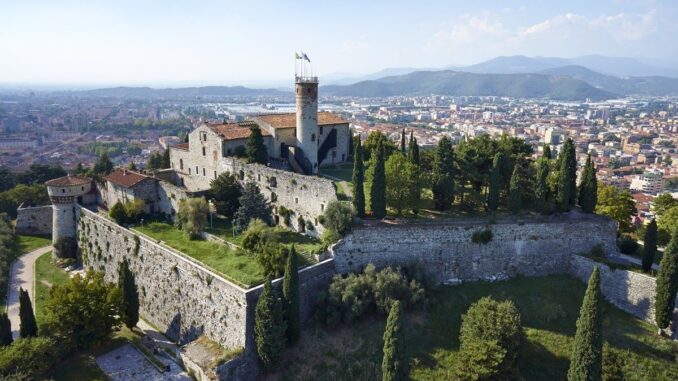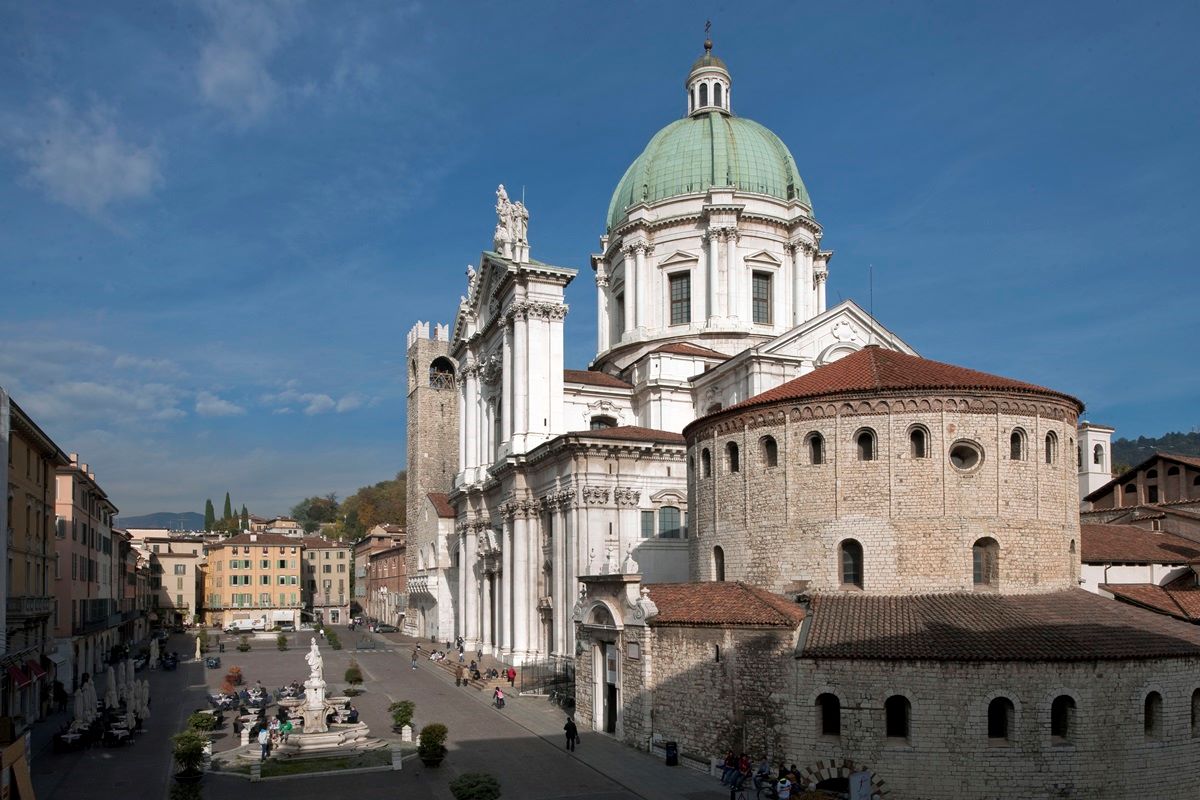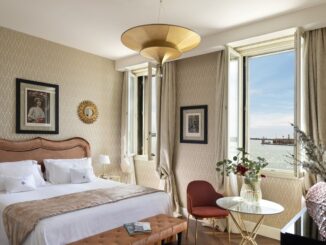
It’s pretty amazing waking up each morning and admiring a mighty Roman temple out of your bedroom window.
But then the beautiful and unspoilt Italian city of Brescia is quite a special place. Along with its more visited neighbour, Bergamo, this area of Lombardy was given Italian capital of culture status in 2023 in a bid to heal the wounds left by the Covid pandemic, with the region being at the epicentre of the disease.
With culture vital in repairing the communities, a cash injection to bring joy through art, music, food and events simply bringing people together, was given to the region. Visiting just as the year was ending, proved to be a wonderful time to see what has been achieved.
And what better start than the impressive Capitolium temple and Roman theatre to enjoy each day. This UNESCO world heritage site is a beauty and especially on crisp January days, with pink sunsets tingeing the tops of the sturdy columns.
Built in AD73 during emperor Vespasian’s reign and dedicated to Jupiter, Juno and Minerva, the temple was almost buried under a landslide, being rediscovered in 1823, along with a bronze statue of a winged Victory, which in 2021 was given a million euro spruce up and now takes pride of place in an onsite museum and is the symbol of Brescia.
Close by is the monastic complex of Santa Giulia, again recognised by UNSECO and now a fascinating museum with Roman remains and architecture from Romanesque and Renaissance periods. Both can be visited using the Brescia Card, which allows entry to cultural attractions and use of public transport including bike and car sharing.

This inspiring city is a wonder to walk around, with every turn of its narrow cobbled streets inviting a peek to see what is around the corner.
Renowned for its milky “whiteness of stone’’ which gives the city its creamy look, Brescia is a classical city, with plenty of green to balance out its beauty.
There are lots of individual shops and family run restaurants and the locals take pride in their traditions with queues outside the pasta specialists, ready to buy the freshly made casoncelli, a ravioli folded into a triangle or sweet shape, wrapped around the stuffing of meat or vegetables and flavoured with parmesan.
Like most Italian cities, Brescia has impressive squares surrounded by awe-inspiring architecture and the main Piazza della Vittoria was built during the Fascist era and dedicated to the country’s victory in World War I. The nearby Piazza della Loggia is the symbol of Renaissance and perhaps the city’s most beautiful, with a stunning astronomical clock and mechanical figures which strike the hour.
More beauty can be found in the Piazza Paolo VI, home to the city’s two cathedrals. The old style building also known as La Rotonda, is one of Italy’s most important examples of Romanesque round churches and is next door to the new and more traditionally built.
Brescia is a real culture city and the Pinacoteca Tosio Martinengo art museum, renovated in 2018, is full of paintings donated by local people and also includes famous pieces such as Raphael’s Angel and the Child Blessing and Lorenzo Lotto’s, The Adoration of the Shepherds.

Another hot spot for culture enthusiasts is the Diocesan Museum of Sacred Art, set in the large cloister of the former Frati Minori Osservanti and its most important work is one depicting the 12 Apostles painted in 1772 by Antonio Cifrondi.
Instagram fans can fill their boots with fabulous subjects such as Broletto Palace in the heart of the city and standing tall, Brescia castle, high on the tops and with stunning views and the tiny Chiesa di San Faustino In Riposo, a church snuggled in amongst the historic buildings.
Every year Brescia is the starting and finishing point for the Mille Milgia vintage car race in June, which sees fancy classics from around the world compete against each other as they zoom through the roads to Rome and back in the hunt for glory.
Dubbed “the red arrow race’’, there is a museum in the Sant’ Eufemia monastery, full of the history of the event, which was first held in 1927.
Easy on the eye and to explore, this mainly flat city which sits at the foot of The Alps between Lakes Garda and Iseo, is simply, just magical.
Fact File:
Getting there: Direct flights are available via low cost airlines and www.holidayextras.com can help with airport parking, lounges and transfers. And for more information on Brescia, please visit their website: www.bresciatourism.it.
Author Bio:
Rebecca Hay is an experienced travel writer and member of The British Guild of Travel Writers. Follow her adventures with her family on Twitter and Instagram @emojiadventurer and on Facebook via EmojiAdventurers2.
Photographs courtesy of Comune di Brescia



Be the first to comment